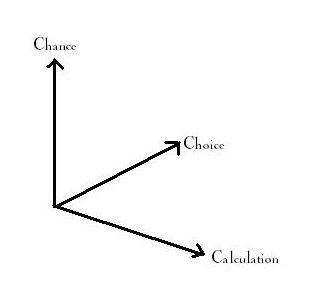I've been digging into the work of the anthropologist and political scientist James C. Scott. His Seeing Like A State: How Certain Schemes to Improve the Human Condition Have Failed is particularly interesting*, showing how authoritarian modernism can disastrously simplify and fail to "read" traditional cultures and the body of knowledge and techniques that these bring to working in complex environments. His examples come both from state regimes both right and left and both villainous and rather more benign (i.e. Soviet collectivization and Tanzanian Ujaama villagification) and include intriguing oppositional voices, for example Rosa Luxemburg contrasted with Lenin and Jane Jacobs with Le Corbusier, oppositional voices from the left making the case for the complexity, sophistication, and value of traditional cultural practices.
A startling juxtaposition here for me is that that between modernism and simplification, from the need to make things clear (Scott's term of art is "legible") — roads straightened, cities drawn to grids, fixed units of measurement, a fixed system of personal and family names, monocultural agriculture, etc. — in order for a modern authoritarian state to assert greater degrees of management and control. A more startling quality is that the impulse for much of this is more aesthetic (or even "faith-based") in nature than rational. Yet, as it often enough happens, these become objects of real, if often subtle, revolt and subversion from forces at the base and margins of societies and beyond state control, taking the opportunity of the failures of planning, through their ability to deal with real material conditions more effectively, indeed rationally, than the statist or corporate planners. (I suspect that the most successful modern societies succeed from a carefully, if tacitly, negotiated compromise between these forces. If I have a criticism of Scott, it is perhaps that he does not give enough consideration to the notion that these responses to the state are themselves, as tied to tradition as they may be, a form of modernism. Yes, we want the universal high quality drinking supply the modern state provides (or promises to provide), but no, we don't want forests with third generations of dying, monocultural Standardbäume. Yes we want modern highways, no we don't want them next to our homes and schools or straight through the middle of our communities. Yes, we want modern utilities, but if we are able to provide our own utilities more cheaply and cleanly by going off the grid, then we want to be able to do that.)
In recent art music we have, of course, our own dynamic between simplification and complexity, as well as between tradition and modernism. This dynamic is full of interesting and productive contradictions and even paradoxes. Minimalism in music, for example, can be a means toward recovering and projecting complexity, while notationally complex music may be such a reification of the note as a musical atom, ripped out of either larger tonal contexts or sealing off attentions from any inner activity within the span of that note, that much complexity is lost.
While there is a relationship of the modernist projects of both states and corporations (and these both authoritarian and consensual), the existence of experimental art music has been either highly controlled or completely deprecated (in authoritarian political regimes) or ignored (under multinational capitalism or consensual republican states). (Interesting how all of these regimes tend to treat culture as non-essential superstructur; for me at least, a complete reversal of hpw things ought be valued.) The relationship of music to the authority can then either be collaborationist, creating propaganda or commodities for the state or the market; oppositional; or autonomous, operating in parallel to but unengaged with the authority.
One of the most interesting ways in which modern art music has been engaged as an oppositional force has been in the project of playing with and around and circumventing rigid lines of demarcation and identity. As I mentioned in a post last week, in the musical use of time, syncopation and rubato are means of going against the grid. A constant in the work of Morton Feldman, for example, was the investigation of ways to compose directly within a graphical rigid score (early on, on graph paper; then in works with an imprecisely defined single graphic note value, later on score paper with pre-drawn measure lines) that blurred, disrupted or even defeated pulse, metre or barlines. (Contrast this with the School of Babbitt's "time point system", which was ostensibly ametrical but in practice a rigid reinforcement of both a fixed pulse and metric accent.)
_____
* Doesn't that title recall John Cage's Diary: How to Improve the World (You Will Only Make Matters Worse), another text with decidedly anarchist sympathies?


